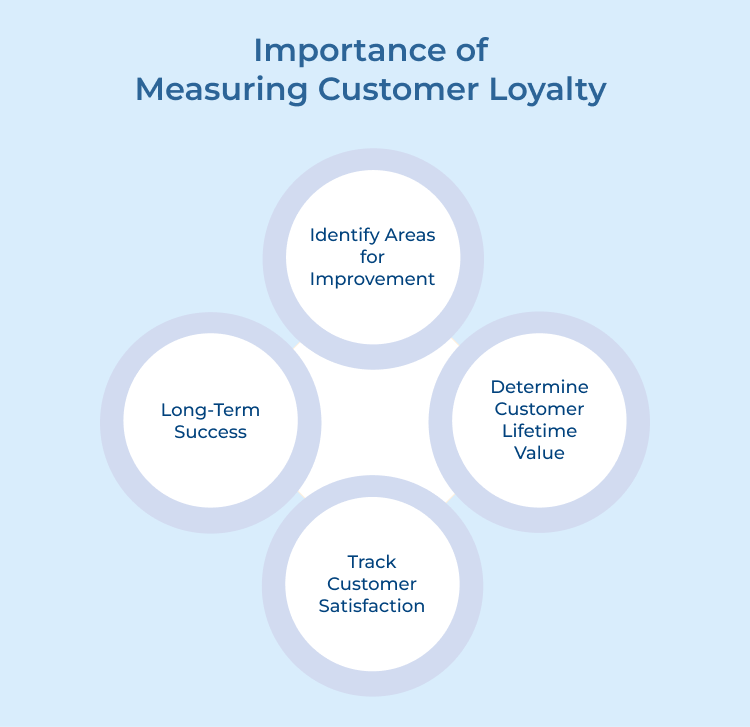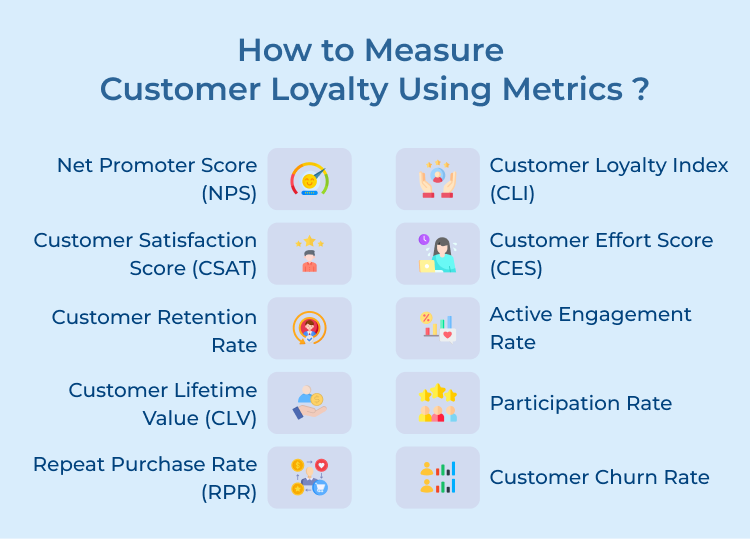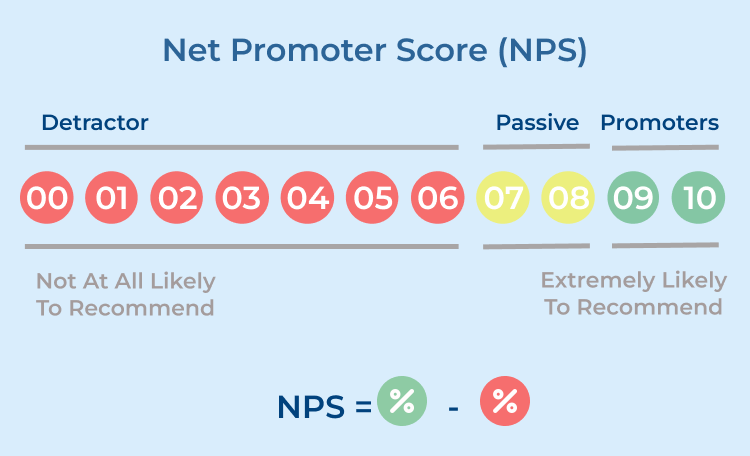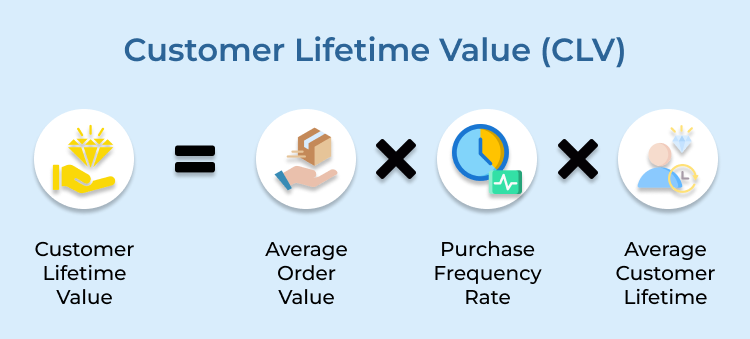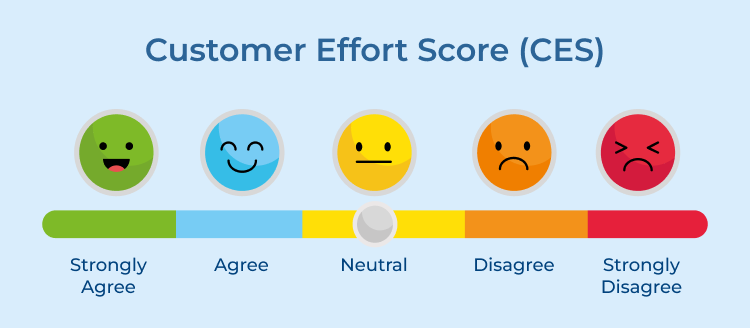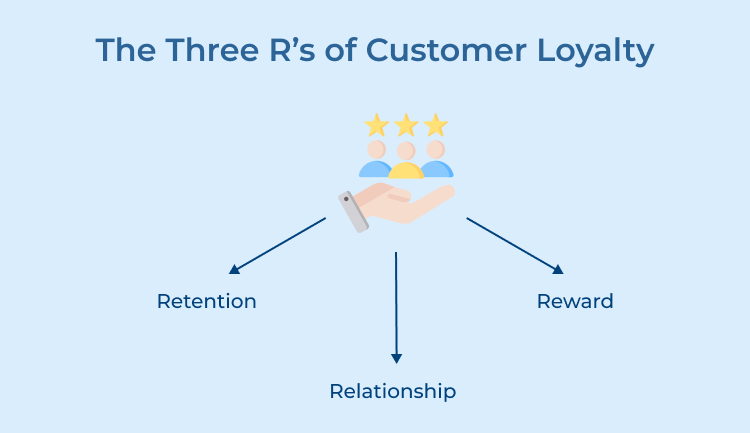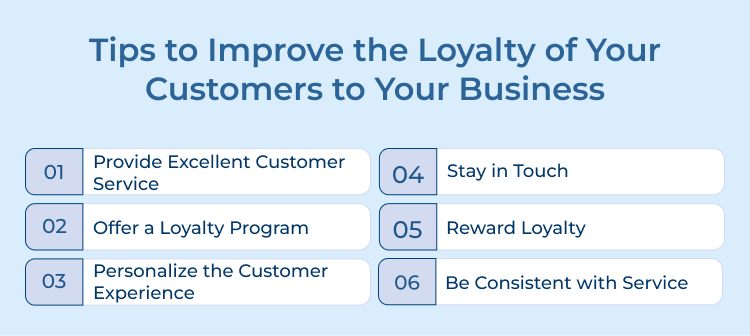1. Provide excellent customer service: One of the key factors in building customer loyalty is providing excellent customer service. Make sure to respond promptly to customer inquiries, resolve any issues or complaints quickly. Go above and beyond to make your customers feel valued.
2. Offer a loyalty program: Encourage repeat business by offering a loyalty program that rewards customers for their continued support. It could include discounts on future purchases, exclusive offers or promotions, or points that can be redeemed for rewards.
3. Personalize the customer experience: Get to know your customers and personalize their experience with your business. Use their purchase history and preferences to tailor your marketing messages/offers to their specific interests.
4. Stay in touch: Keep in touch with your customers on a regular basis through email newsletters, social media, or other communication channels. It will help you stay top of mind and remind them of the value of your products or services.
5. Reward loyalty: Show your appreciation for loyal customers by offering special perks. It could include birthday / anniversary discounts, exclusive sneak peeks of new products or early access to sales.
6. Be consistent with service: Consistency is key when it comes to building customer loyalty. Make sure that your products, services and messaging are consistent across all touchpoints, from your website as well as social media channels to your in-store experience.
Examples of Measure Customer Loyalty
Companies that are able to measure their customer loyalty can better understand their customers’ preferences, leading to improved customer retention and overall business growth.
1. Starbucks
Starbucks has a loyalty program called Starbucks Rewards, which allows customers to earn points for every purchase they make. By tracking customer behavior through this program, Starbucks is able to tailor their marketing promotions and offerings to better meet the needs of their loyal customers.
2. Amazon
Amazon uses customer reviews and ratings to measure customer loyalty. It analyzes customer feedback on their products, then identifies areas for improvement and takes action to enhance the overall customer experience.
3. Apple
Apple has a dedicated customer support team that helps customers resolve any issues they may have with their products. Apple is able to build lasting relationships with their customers and drive customer loyalty due to its robust customer service.
4. Nike
Nike has a strong brand loyalty among their customers, who are often willing to pay a premium for their products. Nike measures customer loyalty by tracking customer engagement on social media platforms, such as likes, shares and comments on their posts. Nike is able to understand their customer’s preferences using this data, leading to targeted marketing campaigns and product launches.
5. Nordstrom
Nordstrom is known for their excellent customer service and personalized shopping experiences. Nordstrom measures customer loyalty by tracking customer retention rates and repeat purchase behavior. It creates a loyal customer base by building strong relationships and providing exceptional service.
Measure Customer Loyalty to Get Real-Time Insights
Measuring customer loyalty is essential for businesses to gain real-time insights into their customer base. By monitoring customer retention rates, satisfaction levels and engagement metrics, companies can better learn their customers’ needs.
Utilizing tools such as customer feedback surveys, Net Promoter Score (NPS) and customer loyalty programs can provide valuable data that can drive strategic decisions as well as improve customer retention.
According to my opinion, with the right strategies in place, businesses can build lasting customer relationships, increase brand loyalty and ultimately drive business growth. By continuously measuring customer loyalty, companies can stay ahead of the competition and ensure long-term success.
